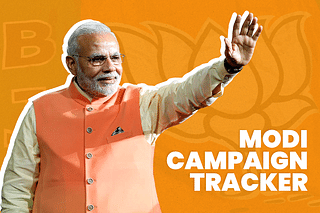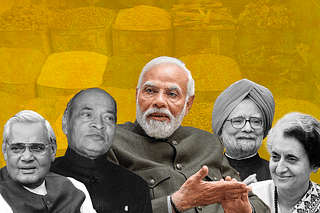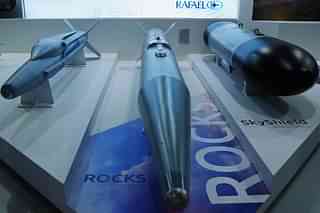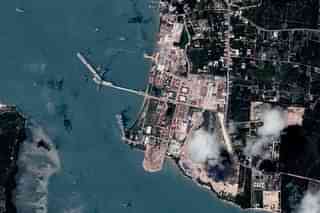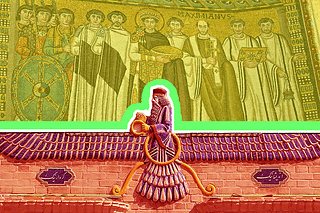Politics
Why Sugata Bose Is Wrong About Netaji
Chandrachur Ghose
Oct 01, 2015, 07:30 PM | Updated Feb 24, 2016, 04:28 PM IST
Save & read from anywhere!
Bookmark stories for easy access on any device or the Swarajya app.
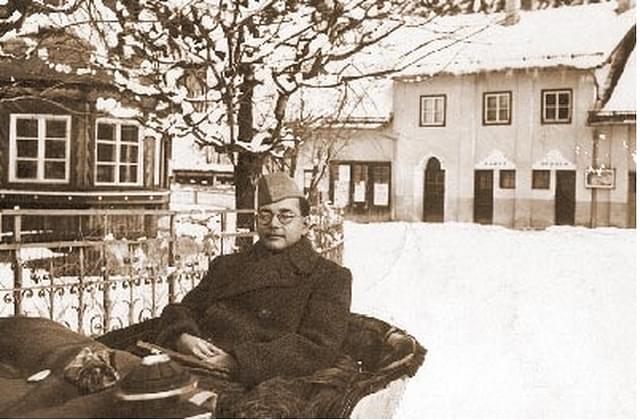
Dr Sugata Bose has chosen information selectively to prove his point about Netaji’s death and ignored all that is inconvenient to his belief.
A member of the Subhash Chandra Bose family has held along with his siblings and parents — a decided minority in the family — the opinion that Netaji’s death in 1945 is indisputable. This member, Sugata Bose, a professor of history at the Harvard University and now a Member of Parliament representing the Trinamool Congress of Mamata Banerjee averred:
The media needs to do due diligence in checking the individual qualifications, credentials and antecedents of so-called family members. Those making wild allegations without an iota of understanding of history should not be given any credence. Without genuine individual accomplishment, family membership counts for nothing.
He didn’t leave the chance to take a dig at Prime Minister Narendra Modi, who has invited the extended Bose family to discuss the issue of declassification of Netaji files in response to their repeated demands in the recent past. After opining that the PM should have met only Anita Pfaff, he wondered:
It is odd that Narendra Modi, who keeps his own family at arm’s length, should be so keen to be seen rubbing shoulders with certain members of Netaji’s extended family.
At a function at Netaji Research Bureau a few years ago, he was even heard saying that declassification was a “non-issue”. But his support for declassification, even at this stage, is welcome. Better late than never, as long as the support is honest.
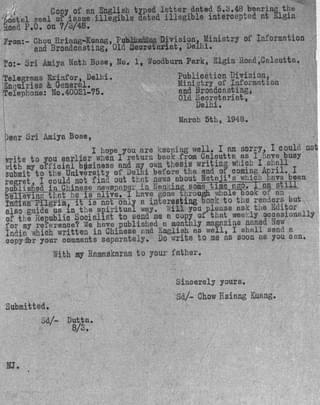
While Dr Bose decried the publicity given to other family members, some news portals played up his family identity — grandnephew of Netaji — and plugged his book, His Majesty’s Opponent – Subhas Chandra Bose and India’s Struggle against Empire, as the definitive proof of Netaji’s death.
It is in this context that it is important to look into Dr Bose’s treatment of Netaji’s death in his book in view of the fact that it has been highlighted as the proof of Netaji’s death — a conclusion reached by a scholar after going through all the evidence — and is likely to be propped up in future too, by the votaries of the ‘death by plane crash’ theory.
The last chapter titled ‘A Life Immortal’ in Dr Bose’s book is marked by a lack of fairness that a scholar should possess and comes out as an effort to establish what he believes and not what the available evidence shows. He has chosen information selectively to prove his point and ignored all that is inconvenient to his belief. This limitation is understandable to some extent since most documents on Netaji’s disappearance examined by the inquiries were kept under lock and key, classified as ‘secret’ and ‘top secret’ by the government, and are not to be found in the library of the Harvard University or in the Netaji Research Bureau. Dr Bose has never been heard to put pressure on the government to release these documents in the public domain, until a few months ago.
Dr Bose breaks into the story of Subhas’s alleged death with great drama, trying to emphasize the human and emotional factor. Ironically, of the four characters whose reactions to the news of Subhas’s death he describes with great emotion, two (Sarat Chandra Bose, and Emilie Schenkl) refused to buy the story as long as they lived. The third, Sisir, became a votary of the ‘death by plane crash’ theory, without ever being able to provide a shred of evidence.
In his book, Dr Bose has presented Emilie’s views as a believer in the plane crash story. However, in an affidavit to the Justice Mukherjee Commission of Inquiry, Surya Bose, the author’s cousin, has presented a completely different picture. According to his affidavit, backed by statements of other family members, Emilie was so much against the story of death by plane crash, that she did not even agree to meet Pranab Mukherjee in 1995, the then External Affairs Minister (now the President), when he had approached her to discuss the possibility of transferring Subhas’s ‘ashes’ from Japan to India.
In 1949, The Nation, a newspaper published by Sarat Chandra Bose, had as its headline spread across the paper “Netaji in Red China: Sarat Bose asserts Govt possess information.” Such a strong statement is difficult to ignore; so the author has to labour to invent a way around. After playing Sarat’s psychiatrist to paint how difficult he found to “accept the loss of his beloved brother”, the author points out that after all he died “before all the pertinent evidence was gathered in 1956”.
As even a non-historian would understand, Sarat was not contesting the story of the plane crash, but was screaming in print that he knew that his brother was alive in communist China — something that now gets backing from declassified West Bengal files.
Dr Bose (“the author” henceforth in this article) has tried to downplay the importance of the recently released files by saying that they “do not contain anything of real substance”, but at least they confirm the position of both Emilie and Sarat.
The author says “the British authorities in India had received the news of Bose’s death with a sense of relief.” This is a clear misrepresentation of facts. A letter from the Bengal government to Delhi on 25 August 1945 said, “… we are not as yet prepared to accept newspaper reports of the death of Subhas Bose in Japan.” In response to a letter of 31 August that year from Calcutta’s Commissioner of Police opining that security prisoners should “be held up till it is known whether Subhas Bose is really dead or not”, the Deputy Inspector General of Police of Bengal’s Intelligence Branch noted on 3 September, “I have already pointed out the danger of trying Subhas Bose in India”, and “we should watch the developments in the next six months.” Had there been a “sense of relief”, teams to investigate the story of plane crash would not have been sent to Southeast Asia.
Regarding one of these teams — that of PES Finney — the author says, “Finney’s report reached the definite conclusion that Bose had indeed died as a result of the plane crash.” That’s yet another attempt at bending the truth. What Finney actually said was “Although at this stage one cannot rule out the possibility of Bose being still alive …the general impression gained… is that Bose did actually die as stated.” In his eagerness to establish his preconceived notion, the author interprets “general impression” as “definite conclusion”.
A note from the military intelligence division of the US in June 1946 (that is, after the investigations by the allied forces were completed), pointed out that
…there is no direct evidence that SUBHAS CHANDRA BOSE was killed in an airplane crash at Taihoku, Formosa, despite the public statement of the Japanese to that effect. Nor is there any evidence available to Intelligence Division which would indicate that the subject is still alive.
On yet another investigation conducted by Figges, the author says that in July 1946, “Figges reported that their mortal enemy had indeed met his corporeal death.” That this inquiry should have been undertaken in itself prove that Finney could not have reached a conclusion since the last of Finney’s available report is from November 1945. In any case, Figgess’ report cannot be taken as final because it merely states what a few Japanese told him in Tokyo and if their words are taken as final, they would contradict the other “evidence” on record. For instance, in this report Dr Tsuruta claimed that he issued Subhas’s death certificate; but elsewhere in the book the author claims that it was issued by Dr Yoshimi.
The author obviously confuses between ‘rumour’ and ‘intelligence’ while discussing an intelligence input of 1946. “There were other rumours making the rounds. According to one, Nehru was said to have received a letter from Bose saying that he was in Russia and wanted to escape to India… The intelligence assessment deemed this story ‘unlikely’, but a growing belief in India that Bose is alive” was a cause for concern,” writes the author. What is more important is what the author has not quoted from this report, which is
In December a report said that the Governor of the Afghan Province of Khost had been informed by the Russian Ambassador in Kabul that there were many congress refugees in Moscow and Bose was included in their number. There is little reason for such persons to bring Bose into fabricated stories…Voradoff, the Russian Vice Consul General [in Teheran] disclosed in March that Bose was in Russia where he was secretly organising a group of Russians and Indians to work on the same lines as the INA for the freedom of India.
As one of the reports amongst the recently released files show, there were similar intelligence reports from other sources, which went even further indicating that Netaji had probably a role to play in the anti-imperialist movements in Southeast Asia.
The author goes on to describe how Gandhi clarified the baselessness of his belief of Subhas being alive by quoting from his article in Harijan of 7 April 1946. Again, he chooses to ignore the letter from Gandhi’s secretary Khurshed Naoroji which she wrote to his American biographer Louis Fischer on 22 July: “If Bose comes with the help of Russia neither Gandhiji nor the Congress will be able to reason with the country,” she wrote. Surely, Naoroji was not imagining things!
The author’s one-eyed approach leads him to make statements such as, “from 1946 to 1956, evidence for the air crash accumulated and became weightier.” Nothing could be farther from truth. He cites the ‘evidence’ of Harin Shah who went to Taihoku in 1946 for investigation and tried to pass on a fictitious death certificate as that of Subhas’; from Yoshimi, the surgeon who apparently treated Subhas on 18 August 1945, but had never seen him or even heard of him before – Yoshimi was told by the interpreter Nakamura that it was Subhas that he was treating; from Ayer, who made a trip to Japan in 1951 seemingly to investigate the veracity of the plane crash story and was secretly suspected of a foul play (along with Rama Murti) over the INA treasures; and of course the investigation by the Committee headed by Shah Nawaz Khan, whose methods of inquiry and treatment of evidence were questioned by the author’s father himself (which again is revealed by the recently released files, which Dr Bose trivialises).
It is noteworthy that the author highlights those witnesses to the Shah Nawaz Committee who testified for Subhas’s death. Yet, it is now well known that the versions of these eye witnesses were so incredibly at variance that it is impossible for any rational person to take them seriously. What is significant about these discrepancies is that they don’t arise from weak recollections of occasional civilian passengers overwhelmed by the situation, but from war-experienced military officers of the ranks of major and lieutenant colonel. It is incomprehensible how these discrepancies can be characterised as “minor”. The committee’s report is also not without a touch of drama: While describing the “poignant scene” of Subhas’s death “before the Committee, Dr Yoshimi” — who did not even know Subhas but had travelled 1,200 km to testify to the committee — “himself broke down and sobbed audibly”. Dr Yoshimi’s theatrics were unmasked about 50 years later by another commission of inquiry. However, as expected, the author has probably forgotten to include that episode in his account.
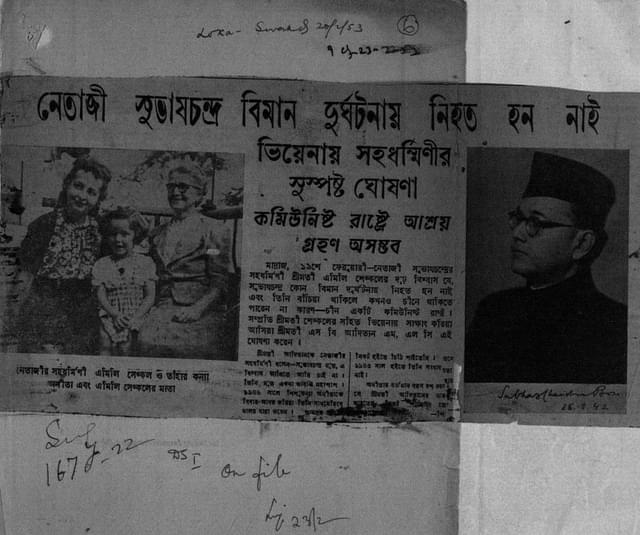
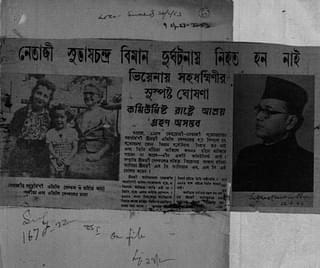
“There was no reason to doubt the witnesses, belonging to various nationalities and walks of life, who all testified that Netaji had met his death as a result of this crash,” says Dr Bose in his book. Obviously, the author can’t see the reason to doubt and so he does not talk about it. It could not have been too difficult to arrange five or six eye witnesses for a planned cover up, especially when someone like Count Terauchi had backed Subhas’s plan to cross over to Manchuria without involving the headquarters, as Ayer was informed by Colonel Tada. That makes it more likely that the Japanese government won’t have much clue about the incident.
The question Sugato babu fails to answer is what could be the reason to doubt the people who contested the story of Subhas’s death? He merely parrots GD Khosla’s (retired judge who chaired the second inquiry) claim that the accounts of those who contested the story of Subhas’s death were “result(s) either of hallucination helped by wishful thinking or have been invented by persons who wanted to draw attention to themselves and advertise themselves as public-spirited men..” How realistic does Khosla’s claim sound, and how honest does the author’s support to the claim appear when we have on this list of people trying “draw attention to themselves,” Sarat Chandra Bose, Muthuramalingam Thevar, Hari Vishnu Kamath, Leela Roy, Ramesh Chandra Majumdar, Amiya Nath Bose, Samar Guha, Gobinda Mukhoty, Mulka Govinda Reddy, and Sunil Das?
The author trashes Suresh Chandra Bose’s Dissentient Report without getting into the report’s details. Far from being a “rambling dissent” as mentioned by the Trinamool MP, Bose’s dissent report brought serious charges against Shah Nawaz and SN Maitra, the other member of the committee, especially on their method of dealing with witnesses and evidence. The author accuses Suresh Chandra Bose of signing a draft report agreeing that Subhas had died in the plane crash, and then changing his mind.
In his dissent report, Bose clearly narrated how this false accusation of changing his mind came about. The author is obviously not interested in a balanced account, and is happy repeating the accusation mindlessly that was first maliciously spread in 1956 and repeated as late as 2006 by the then Home Minister on the floor of Parliament.
Interestingly, despite being so highly impressed by the Shah Nawaz Committee, the author has chosen to maintain complete silence on an issue on which the committee raised some thorny questions but left them unanswered. What happened to the INA treasures?
The author avoids the background to the formation of each of the three inquiries. Thus, Nehru’s firewalling of any demand for inquiry for almost nine years, the submission of more than 350 MPs, which forced Indira Gandhi to form the Khosla Commission, and the role played by the Supreme Court and the Calcutta High Court in the formation of the last inquiry by Justice Manoj Mukherjee — all remain unmentioned and unexplained.
Without getting into the details, the author simply champions the findings of the Khosla Commission. It would have been interesting to know Dr Bose’s views on one of Khosla’s findings:
The Japanese, however, looked upon him not as an equal ally, but as a person whom they could use for their own ends…All the evidence points to the fact that the Japanese neither had complete confidence in Bose’s ability to lead a large army and secure victories over the Allied Forces, nor did they fully trust him.
This is a finding that was accepted by the Government of India.
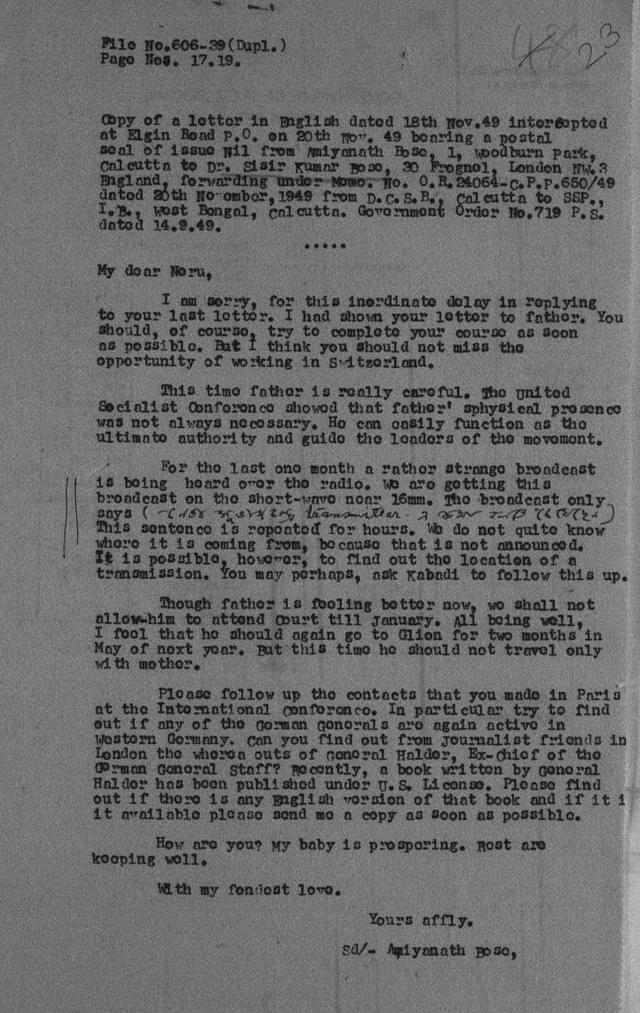
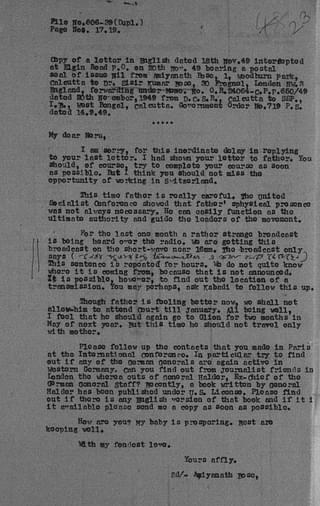
Just as Suresh Bose had vividly described the strange ways of functioning of the Shah Nawaz Committee, Samar Guha, an MP, dissected and tore apart Khosla’s method of treating evidence. Understandably, Guha’s views are too problematic to the author’s belief to find a mention in the book.
By ascribing the rejection of the Reports of both Khosla Commission and Shah Nawaz Committee to political prejudice, the author blindly repeats the allegation made by former Home Minister Shivraj Patil and highlights only half of the story. If he accepts that the Janata Party rejected this report for political exigency, then to be fair, he must also accept that the Congress government so far championed the plane crash story for political reasons. But the author is unable to take that fair position, for whatever reasons.
Otherwise, instead of blaming it on politics (and virtually accusing a former Prime Minister of lying on the floor of Parliament), he would have tried to figure out why then Prime Minister Morarji Desai, who was no friend or follower of Subhas, and in fact who belonged to the opponent political camp, would point to availability of new documents as the reason for discarding earlier findings.
For the sake of transparency, the author should have also mentioned that his father, from whom he inherits the belief in the plane crash story and whose evidence he repeatedly cites in the book, belonged to the Congress — the party that has led the charge in propagating the story of Subhas’s death by plane crash. What is even more shocking is the author’s silence on destruction of secret files on Subhas. Could any historian worth the name look over such a desperate and heinous act?
Next, the Justice Mukherjee Commission of Inquiry incurs the author’s wrath. Instead of making an effort to logically disprove Justice Mukherjee’s findings, he begins by calling him a “retired Bengali judge”, trying to give this issue a regional colour. Perhaps he should be reminded that Supreme Court judges are not selected on the basis of — or identified by — their ethnicity, caste or religion, but by their capabilities.
The author, as if seething in anger, brings in serious charges against the Mukherjee Commission but, in keeping with the general trend of the book, avoids substantiating them. “The judge himself harboured a preconceived notion, as he confessed in 2010, that Bose was living as an ascetic in the north Indian town of Faizabad decades after 1945,” he writes. Now, how did the author reach this conclusion? Justice Mukherjee never confessed that he “harboured a preconceived notion”.
The historian cites a show on the Bengali news channel Star Ananda as the source of his reference! As it happens, the programme aired by the said news channel showed only a few seconds’ fragment of a detailed interview given by Justice Mukherjee to a researcher who was making a documentary. During the interview, Justice Mukherjee confessed that, after going through all the evidence, he was 100 per cent certain that Subhas was alive till 1985, living as a monk in Faizabad.
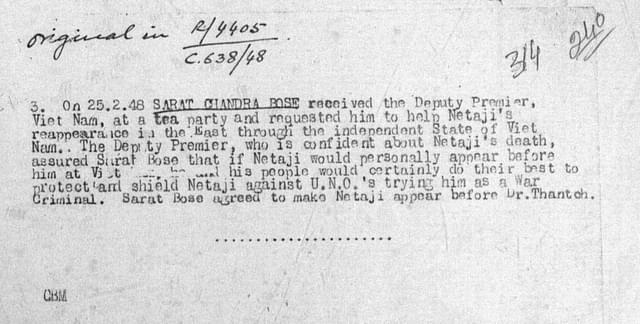
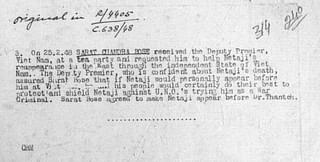
Far from having a preconceived notion, Justice Mukherjee became familiar with the Faizabad link only in 2001, after over two years since the inquiry was instituted when he visited the house where this monk was last known to live to scrutinise his belongings. True to his profession, Justice Mukherjee drew the substantive conclusions in his final Report, namely that there was no aircrash at Taihoku Airport on 18 August 1945, based purely on evidence he could gather under severe constraints placed on him by the central government in terms of provision of information held by the government, and not on his personal views which he had expressed in an interview much after the submission of his report.
The author gets angry with Justice Mukherjee for “entertaining the most preposterous claims” and thereby adding “to the confusion in the public mind about the life and death of a great leader of the independence movement”. Of course, the author — a serious historian — is not expected to understand the basic principles of a commission of inquiry that allow people to come and submit what they consider to be evidence. Only if his research work was a little rigorous, he would have known that his favourite “eminent jurist” Justice GD Khosla had done the same thing. In fact a lot of people making these “preposterous claims” were common to both the inquiries, the only novelty being the Faizabad story.
Sensing his inability to deal with the logical exposition of Justice Mukherjee, the author chooses diatribe over critiquing the merits of the commission head’s arguments. The Taiwan government could not have produced any document regarding the plane crash, he insists, since the island was under Japanese occupation until the spring of 1946. Here the guesswork of a prejudiced author overshadows the serious historian. He should have thrown some light as to how the document related to some Ichira Okura and documents related to General Shidei’s death were preserved.
Moreover, even if the author’s contention is accepted for the sake of argument, it remains to be answered as to why the numerous investigations of the Allied Forces could not locate such a document during their investigation in 1945 and 1946. As the Mukherjee Commission Report points out, a fact that the author again conveniently misses out, the Institute of Taiwanese History maintains microfilmed local daily newspapers of that time. Is it believable that a plane crash death of the Chief of the Kwantung Army and the Head of the Indian government-in-exile was not reported in the local newspapers?
If that is not convincing enough, sample this: the local daily reported the release of Sarat Chandra Bose in India in September 1945. From the author’s viewpoint, it would seem that reporting on Sarat Chandra Bose in faraway India was more important than reporting his more famous brother’s death a few kilometres away.
The author also makes much of his father’s collection of evidence to be convinced of Subhas’s death by the so-called plane crash. Without going into the merit of this self-championing, it would be sufficient to point out that both parents of the author evaded the official inquiries when asked to present their ‘evidence’. On being summoned to depose before the Justice Mukherjee Commission, Sisir Kumar Bose wrote on 22 September 2000, “I have no personal knowledge as to the issues referred to the Commission. I am therefore not competent to depose on this matter.” In other words, if the author is correct, Sisir Bose was not telling the truth to the commission. But if Sisir Bose was being truthful, then clearly the author is not.
As if this laborious effort to pass off fiction as scholarly exercise were not enough, Dr Bose dragged former PM Dr Manmohan Singh into his labyrinth of fantasy weaving. He made two claims in his book about the former Indian Independence League man Rama Murti and the ‘ashes’ of Netaji:
- “According to the Murti family, as an extra precaution, Rama Murti divided up the cremated remains and hid a portion in his home. This is stated by his nephew Anand J Murti in a signed affidavit attested by the Embassy of India in Tokyo, dated August 18, 2008.”
- “The portion of Netaji’s mortal remains kept in the Murti home was brought back to India in March 2006, in consultation with Netaji’s daughter Anita, and the prime minister of India was informed of this development.”
When I asked the Ministry of External Affairs and Prime Minister’s Office in 2011 if these claims were true, the Foreign Ministry refused to comment on the affidavit of Anand J Murti, but stated that the Government of India was not aware of Netaji’s ashes being with the Murti family. The PMO denied the existence of any information from Dr Bose.
Scholarship and honesty do not always go hand in hand.
Save & read from anywhere!
Bookmark stories for easy access on any device or the Swarajya app.
Chandrachur Ghose is a business strategy consultant and founder-member of 'Mission Netaji'.
Introducing ElectionsHQ + 50 Ground Reports Project
The 2024 elections might seem easy to guess, but there are some important questions that shouldn't be missed.
Do freebies still sway voters? Do people prioritise infrastructure when voting? How will Punjab vote?
The answers to these questions provide great insights into where we, as a country, are headed in the years to come.
Swarajya is starting a project with an aim to do 50 solid ground stories and a smart commentary service on WhatsApp, a one-of-a-kind. We'd love your support during this election season.
Click below to contribute.

